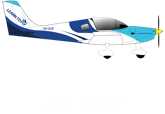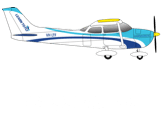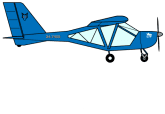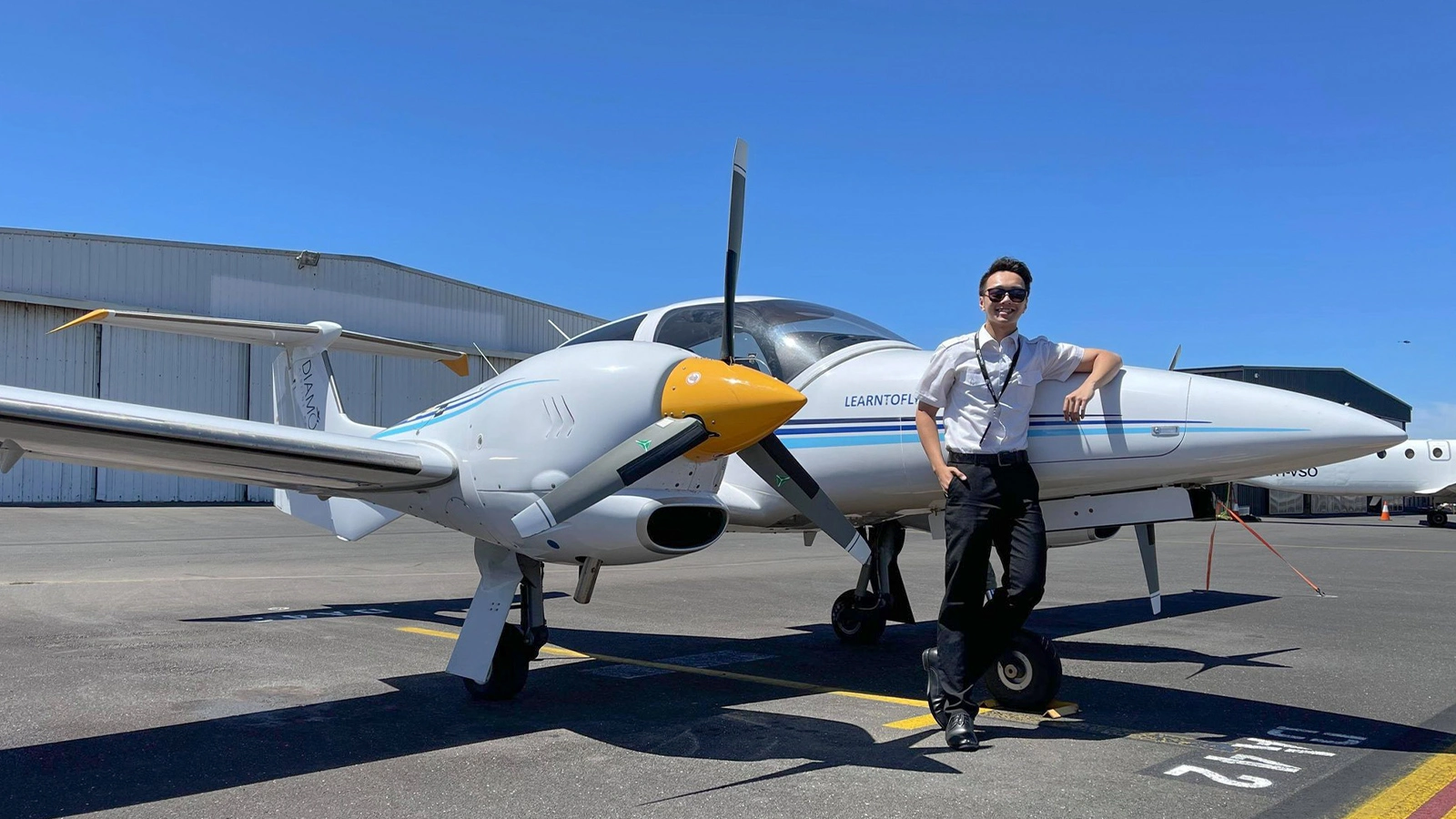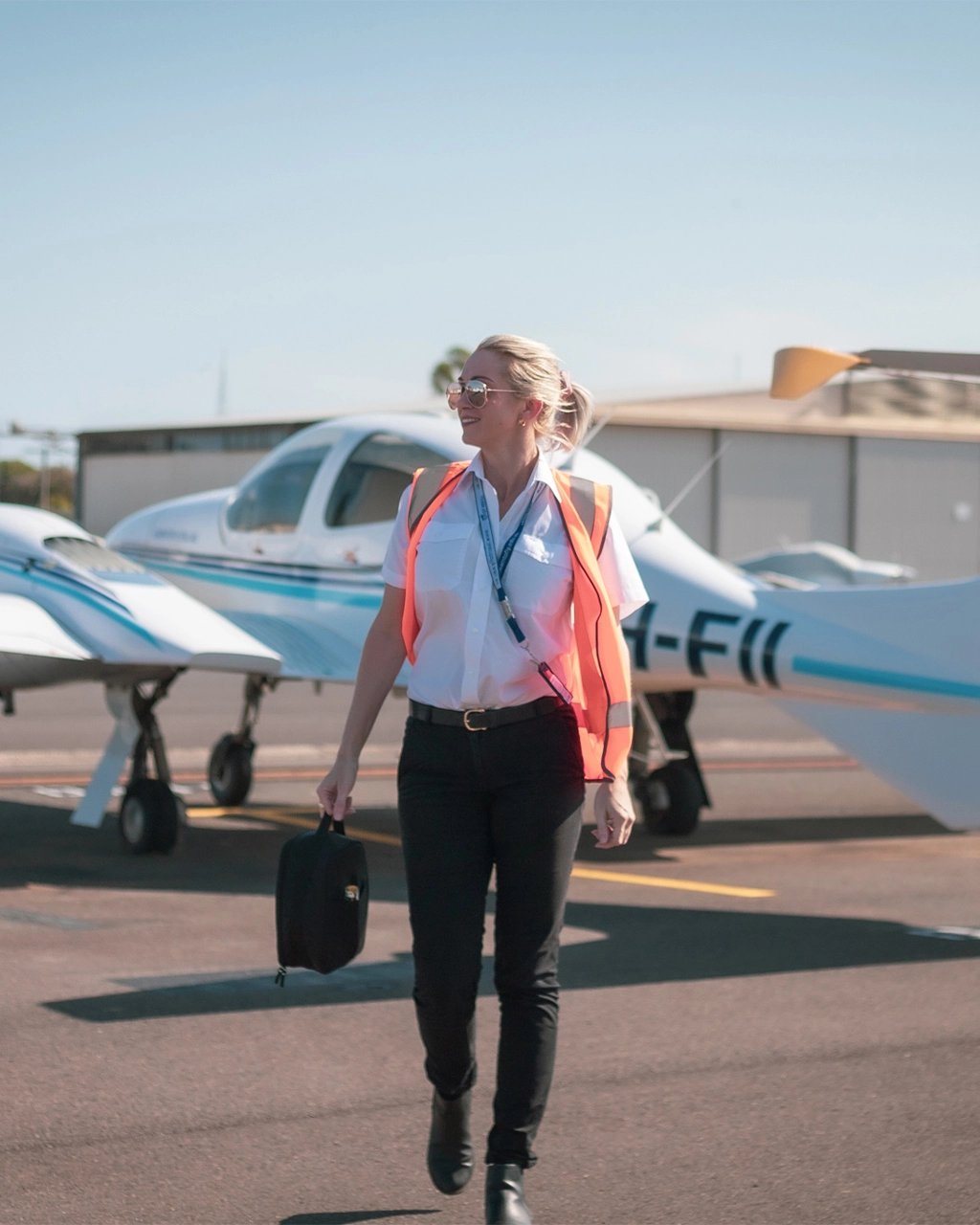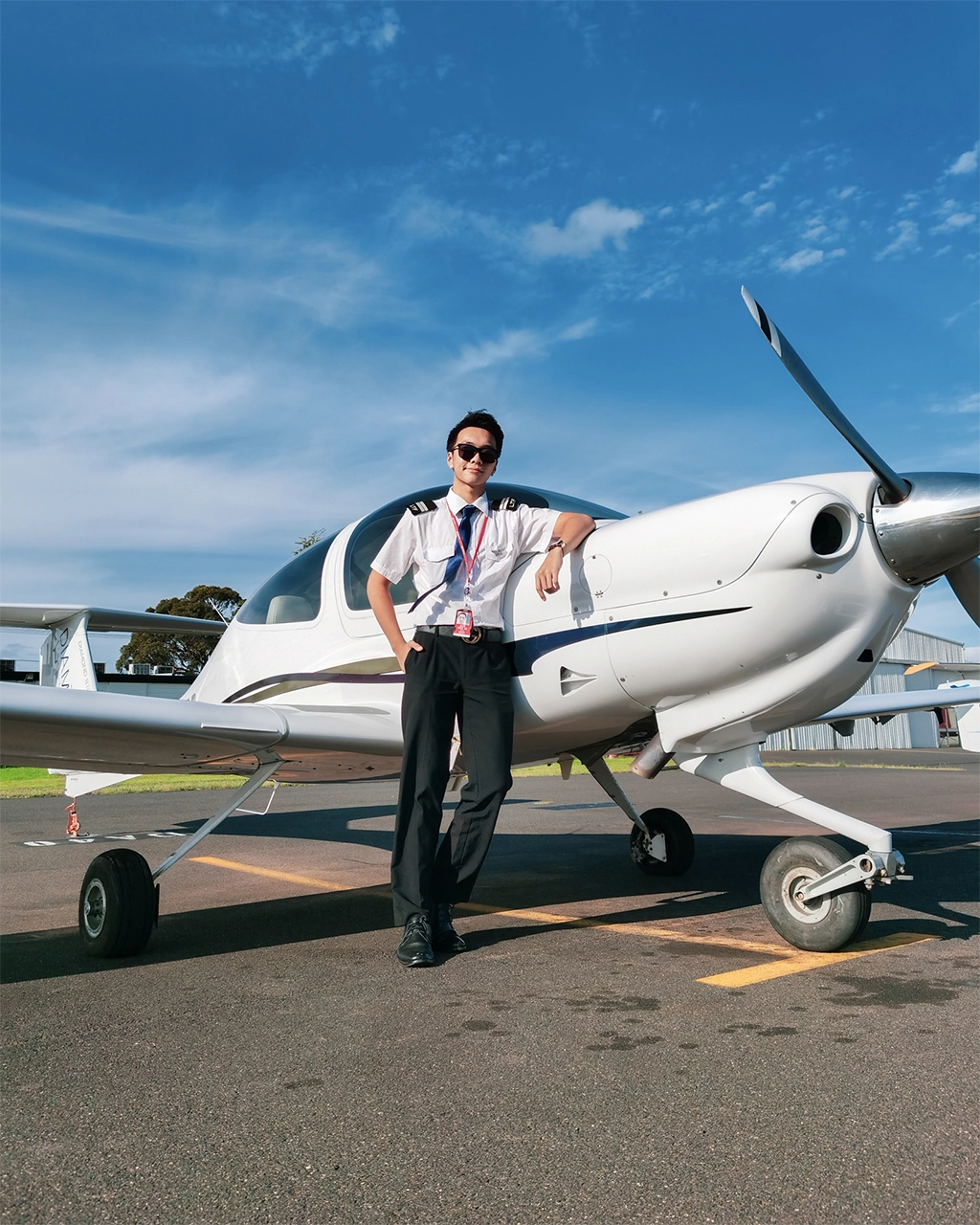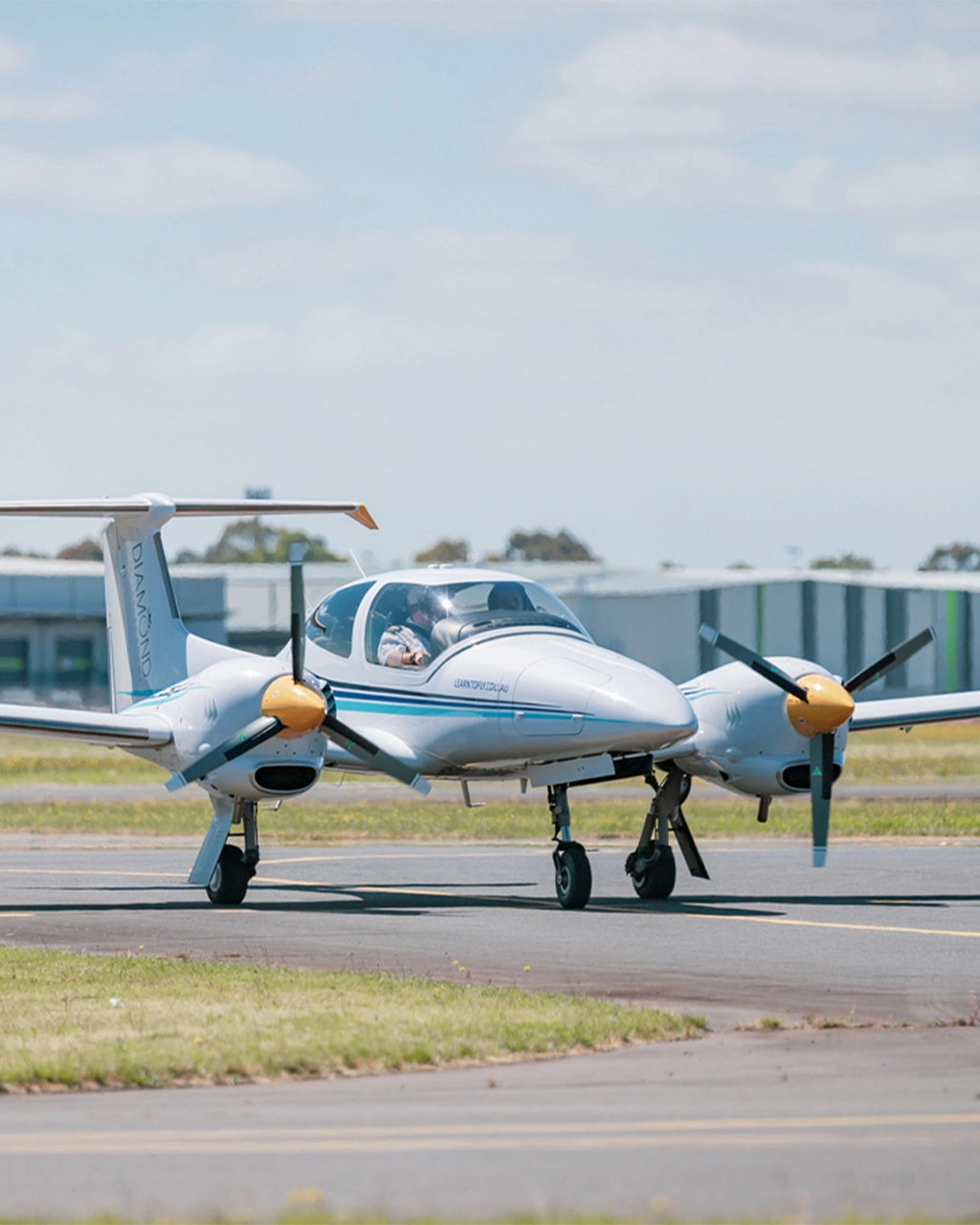
Diploma of Aviation (Instrument Rating)
Earn 3 multi-engine and instrument flying qualifications in 1 course
AVI50519
Diploma of Aviation (Instrument Rating)
RTO Code: 45684 CRICOS Provider: 03913A
Simulation Hours
Duration

Commencing in
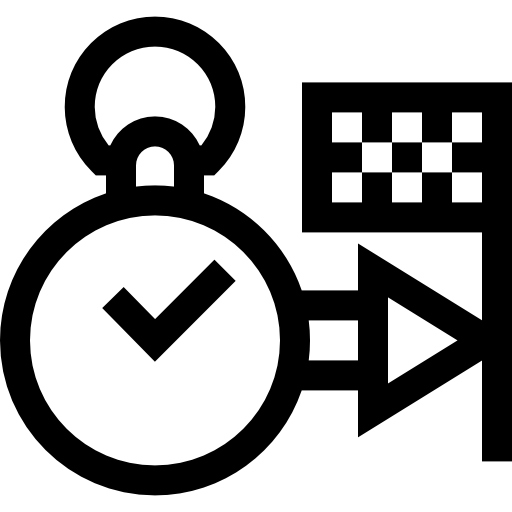
Application Deadline

Finance
What's included?
A crucial step in any professional pilot's training
An Instrument Rating is a must-have for any aspiring pilot seriously considering a successful career in aviation, and is
a compulsory requirement for many career pathways including becoming an airline pilot. The AVI50519 Diploma of Aviation (Instrument Rating) course combines both multi-engine and instrument flight training, making it a highly valuable course for professional pilots.
The course first covers CASA Multi-Engine Class Rating syllabus, teaching you how to operate a multi-engine aircraft, before moving on to the instrument flight training components. You’ll begin instrument training in our state-of-the-art full cockpit ALSIM AL42 Diamond DA42 flight simulator, which features a Garmin G1000 avionics system, before moving on to practical instrument flying exercises in single and then multi-engine aircraft.
RTO Code: 45684 CRICOS Provider: 03913A
Master your instruments, and your career path
Mastering your instruments and obtaining an Instrument Rating will allow you to act as Pilot In Command (PIC) for departure, flight, and arrival without visual reference or in marginal weather and light conditions under Instrument Flight Rules (IFR). Being able to fly regardless of conditions greatly increases your pilot career options. Upon completion of this course, you will receive both a Multi-Engine Class Rating and a Multi-Engine Command Instrument Rating, as well as your Diploma of Aviation (Instrument Rating) qualification.
Instrument Rating training takes a minimum of 40 hours, which includes 20 hours of flight simulator training and 20 hours of practical flight training. During the course you will be taught and assessed in navigation aid tracking, instrument approaches, emergency procedures, take-off procedures and landing procedures. To be able to commence this course, you must already hold a Commercial Pilot License (CPL).
RTO Code: 45684 CRICOS Provider: 03913A
-
1. Program Summary
Upon completion of the Diploma of Aviation (Instrument Rating) course, students will have gained the minimum experience which is required as a baseline for the aviation industry. This competency will allow students to fly as an IFR (Instrument Flight Rules) pilot in a multi-engine aircraft, and fly in reduced minima as set out in the approach and departure procedures.
Prerequisites: Commercial Pilot Licence (CPL)
Study Mode: Mixed (Face-to-Face & Online)
Availability: Moorabbin (Melbourne, VIC)
Flight Training Hours: 50.9
Duration: 13 weeks | Full Time @ 24 Hours a Week
Cost: AUD $38,500
RTO Code: 45684 CRICOS Code: 03913A -
2. Course Units
AVIH0013 Plan a flight under instrument flight rules
AVIH0017 Navigate aircraft under instrument flight rules
AVIF0029 Implement threat and error management strategies
AVIF0030 Manage safe flight operations
AVIY0033 Operate aircraft using aircraft flight instruments
AVIY0044 Conduct a 2D instrument approach
AVIY0045 Conduct a 3D instrument approach
AVIY0050 Perform instrument arrival and standard arrivals procedures
AVIY0072 Operate a Multi-Engine Aeroplane
AVIY0073 Operate aircraft in the traffic pattern at night
AVIY0074 Perform non-published instrument departure procedures
AVIY0075 Perform published instrument departure procedures
AVIY0076 Perform visual circling approach
AVIY0081 Conduct a 2D global navigation satellite system non-precision instrument approach
AVIH0015 Plan a flight under night visual flight rules
AVIH0016 Navigate aircraft under night visual flight rules
AVIW0032 Operate and manage aircraft systems -
3. CASA Theory Exams
The AVI50519 Diploma of Aviation (Instrument Rating) is developed to align with the CASA syllabus and embed the learning outcomes for students to prepare to undertake the required CASA cyber examinations. Theory assessments (examinations) require a 70% pass mark except for those marked*. Click the below links for more information.
Instrument Rating
-Instrument Rating Examination (IREX) -
4. Timetable
-
5. Policies
Refund Policy: Refer To Student Handbook
Privacy Policy: Refer To Student Handbook
Grievance Policy: Refer To Student Handbook -
6. ASQA VET Quality Framework
For more information on the ASQA VET Quality Framework, visit
www.asqa.gov.au

Timetable
|
Week |
CASA Content |
ASQA Content |
|
1 |
Instrument Rating Theory |
N/A |
|
2 |
||
|
3 |
VOR/NDB Intercepts Sector Entries |
AVIF0029 Implement threat and error management strategies AVIY0075 Perform published instrument departure procedures |
|
4 |
Standard Instrument Departures DME Arc |
AVIF0030 Manage safe flight operations AVIY0044 Conduct a 2D instrument approach |
|
5 |
2D Approach RNAV-GNSS 3D Approach |
AVIY0045 Conduct a 3D instrument approach AVIY0081 Conduct a 2D global navigation satellite system non-precision instrument approach |
|
6 |
Arrivals and STARS Circling Approach Departures |
AVIW0032 Operate and manage aircraft systems AVIY0050 Perform instrument arrival and standard arrival route procedures |
|
7 |
Local Airwork |
AVIY0076 Perform visual circling approach AVIY0033 Operate aircraft using aircraft flight instruments |
|
8 |
Local Airwork |
AVIY0074 Perform non-published instrument departure procedures AVIY0073 Operate the aircraft in the traffic pattern at night |
|
9 |
Navigation Exercise 1-2 |
AVIH0013 Plan a flight under instrument flight rules |
|
10 |
Navigation Exercise 3-4 |
AVIH0017 Navigate aircraft under instrument flight rules |
|
11 |
Revision |
|
|
12 |
Flight Test |
|
Flight training milestones are subject to student progression and weather.
For further information on syllabus and lessons, refer to individual student training plan
Safe & Seamless Training.
Diploma Course Details
Every student pilot should enjoy flying. Learn To Fly is constantly creating resources to help students do just that. Not only modern aircraft, but also facilities, experienced instructors and curriculums to create magical learning experiences and make every moment of air time worth it.
RTO Code: 45684 CRICOS Provider: 03913A
Step by Step Procedures
How To Apply?
At Learn To Fly Melbourne, we don’t just train pilots, but future captains. If you have a passion for flying and the ambition to develop a career in aviation, we would like to hear from you. Applications for our 12-week AVI50519 Diploma of Aviation (Instrument Rating) course are open year-round, with quarterly intakes. Grab the opportunity to complete this highly valuable professional pilot qualification today!
-
1. Assess Your Eligibility
1. Download Application Checklist
Requirements:
- Be over the age of 18 years
- Graduated High School or equivalent
- IELTS Overall Band Score 6.0 or equivalent
- Pass the Skills and Interview Assessment
You must be able to:
- Obtain an Aviation Reference Number
- Obtain an Aviation Security ID Card
- Obtain a CASA Class 1 Aviation Medical Certificate
- Obtain a Student Visa -
2. Online Enrolment
1. Download Enrolment Process Overview (International Students)
2. Download Expression of Interest Form
Enrol Online through the “ENROL NOW” button on this page. After completing the online registration form, you will then be given a checklist containing a list of documents to submit.
Applicant must submit a completed checklist before the Course stated application deadline in order to be considered for application.
Documents must be notarised or certified if stated within the checklist. -
3. Skills and Interview Assessment
We will assess your application and we will inform you whether your initial application has been verified. Once verified, you may be scheduled for a Skills Assessment and an Interview Assessment.
Skills Assessment
Applicants will be scheduled to complete a skills assessment and provided with the details on how they may complete it. Upon completion, applicants will be advised on where their score stands and if they should re-take the skills assessment or proceed to the interview assessment.
Interview assessment
Applicants who have met the skills assessment criteria and verified all their documents will be invited to participate in an interview with LTF’s student enrolment team and flight instructors. Information from these interviews will be used to assess your suitability for the course and it can take between 1-4 hours.
Applicants will be advised following the conclusion of their Skills and Interview assessments if they can proceed with enrolment. -
4. Apply for Recognition of Prior Learning (Optional)
1. Download Recognition of Prior Learning Kit
2. Download Recognition of Prior Learning Form
Recognition of Prior Learning
Learn To Fly Melbourne will ensure that an applicant’s prior learning is recognised if it meets the criteria as stated within the Recognition of Prior Learning Kit. Training from any other Registered Training Organization will be accepted only if an individual’s prior learning can be substantiated to show that the key learning outcomes /unit of competencies have been achieved.
All applications for RoPL will be assessed by LTF’s RoPL Assessor. -
5. Receive and Accept the Offer of Enrolment
If your application is successful, you will be offered a place in the selected course. We will send you a Letter of Offer, an Enrolment Agreement and an invoice for the AUD$1,500 non-refundable enrolment fee.
You will be required to make a payment as part of the processing fee for your electronic Certificate of Enrolment (eCOE) which will be required to apply for a student Visa. The Enrolment Fee is non-refundable and is not a guarantee that your Visa will be approved, it is only for verification of your enrolment with LTF.
Once you have read, signed and returned the forms as well as made payment, we will send you the eCOE within 28 days from the confirmation of acceptance. -
6. Student Visa Application Information
Learn To Fly Melbourne does not help in the application process for a student Visa. Applicants are required to complete their Visa application independently.
With a successful application and payment of the Enrolment Fee, Learn To Fly Melbourne will issue the applicant an electronic Certificate of Enrolment (eCOE) which is to be submitted as a part of the student Visa application.
Applicants are to inform LTF once their student Visa is approved before they are confirmed for placement within the course. -
7. Orientation
All students are required to attend an orientation before the commencement of the course.
Orientation is an excellent opportunity to:
- Meet your fellow student pilots
- Meet your instructors and LTF support staff
- Tour the campus
- Receive your pilot uniform and purchase textbooks/ training aids.
Students must also update their essential information with LTF during orientation. -
8. Related Documents
See why there’s no better place to learn to fly.
Our Graduate
Chunki (Peter) Cheung“Having an Instrument Rating not only allows you to fly in more weather conditions – learning how to operate under IFR broadens your aviation knowledge and gives you a competitive advantage when applying to airlines. Learn To Fly goes above and beyond to help you succeed and be prepared for your career. They also offer you the option of training in a Diamond DA42 or Piper Seminole aircraft.”



